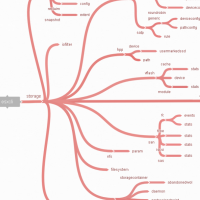 In vSphere 6.7 the command line interface esxcli has 62 new commands. Esxcli is a complete set of commands that you can use for troubleshooting, configuration or kickstart files. I have created and printed a mindmap to navigate through the namespaces more quickly. This post covers only basic namespaces, available on all ESXi 6.7 hosts. If you've installed additional software you might see more namespaces. I've also created mindmaps for ESXi 5.1, ESXi 5.5, ESXi 6.0 and ESXi 6.5.
In vSphere 6.7 the command line interface esxcli has 62 new commands. Esxcli is a complete set of commands that you can use for troubleshooting, configuration or kickstart files. I have created and printed a mindmap to navigate through the namespaces more quickly. This post covers only basic namespaces, available on all ESXi 6.7 hosts. If you've installed additional software you might see more namespaces. I've also created mindmaps for ESXi 5.1, ESXi 5.5, ESXi 6.0 and ESXi 6.5.
ESXCLI in version 6.7 has 15 namespaces:
- device - Device manager commands
- esxcli - Commands that operate on the esxcli system itself allowing users to get additional information.
- fcoe - VMware FCOE commands.
- graphics - VMware graphics commands.
- hardware - VMKernel hardware properties and commands for configuring hardware.
- iscsi - VMware iSCSI commands.
- network - Operations that pertain to the maintenance of networking on an ESX host. This includes a wide variety of commands to manipulate virtual networking components (vswitch, portgroup, etc) as well as local host IP, DNS and general host networking settings.
- nvme - VMware NVMe driver esxcli extensions
- rdma - Operations that pertain to remote direct memory access (RDMA) protocol stack on an ESX host.
- sched - VMKernel system properties and commands for configuring scheduling related functionality.
- software - Manage the ESXi software image and packages
- storage - VMware storage commands.
- system - VMKernel system properties and commands for configuring properties of the kernel core system and related system services.
- vm - A small number of operations that allow a user to Control Virtual Machine operations.
- vsan - VMware Virtual SAN commands
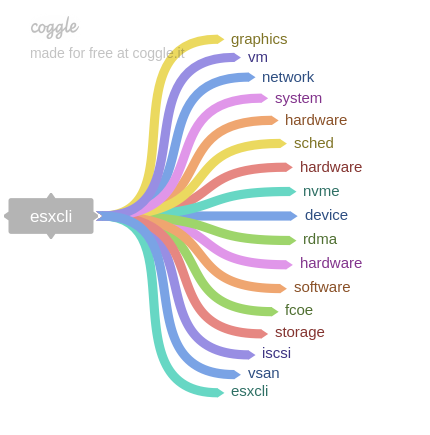
DEVICE
The device namespace decrypts hardware information from device aliases (vmnic/vmhba).
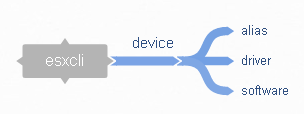
ESXCLI
The esxcli namespace can be used to list all available namespaces and commands. I've used this command to get the list, export it to a CSV file to create this mindmaps.

FCOE
The FCoE namespace has Fibre Channel over Ethernet discovery and adapter listing capabilities.

GRAPHICS
The graphics adapter manages hardware-accelerated 3D graphics for virtual machines.
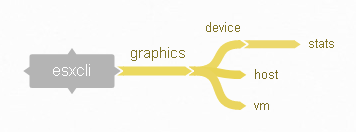
HARDWARE
The hardware namespace can be used to gather information about the physical hardware.
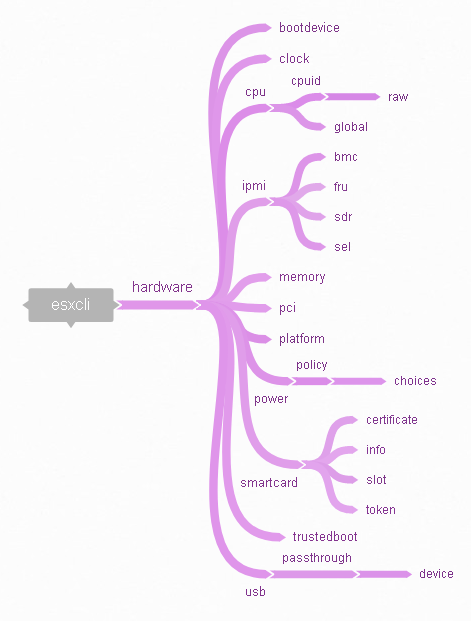
ISCSI
The iscsi namespace can be used to configure iscsi adapters. This can be really helpful in kickstart scripts, to configure shared storage arrays.
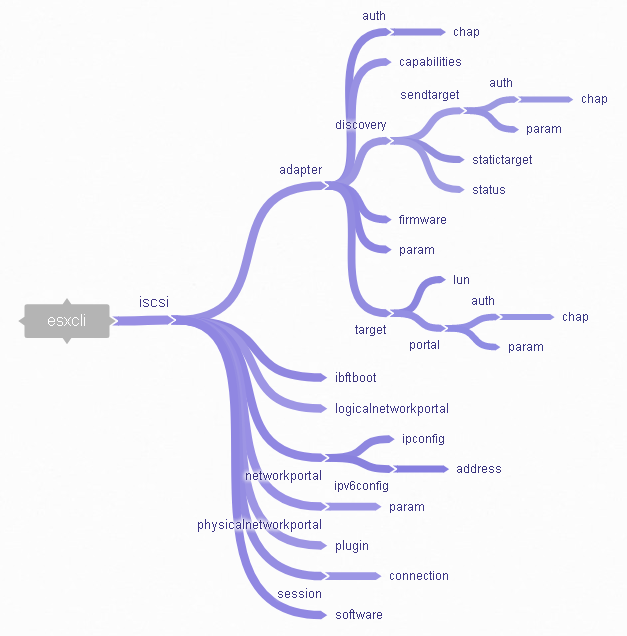
NETWORK
The network namespace is the most powerful namespace. You can configure local vSwitches and Distributed Virtual Switches (dvSwitch). You can also manage the local IP address and firewall configuration. This is a must-have in your automated ESXi installation workflow.
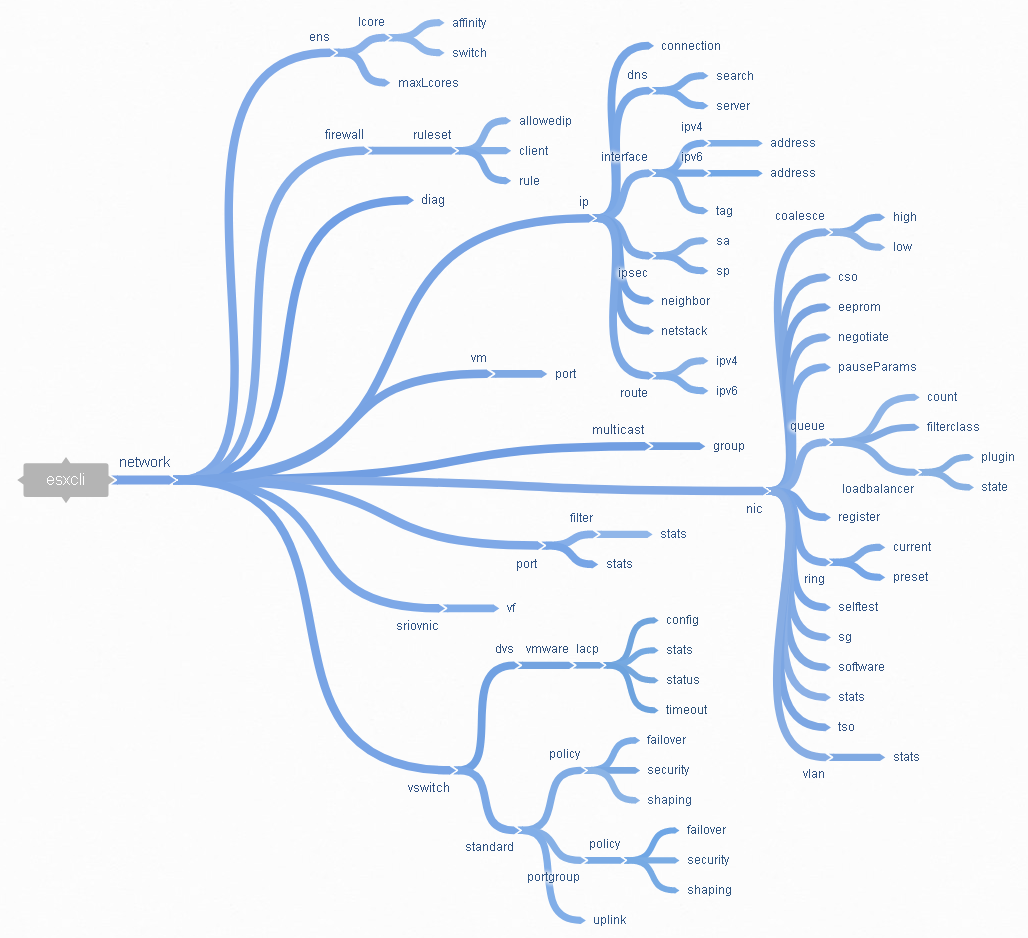
NVME
VMware NVMe driver extensions. Allows viewing status information from the latest generation of flash drives.
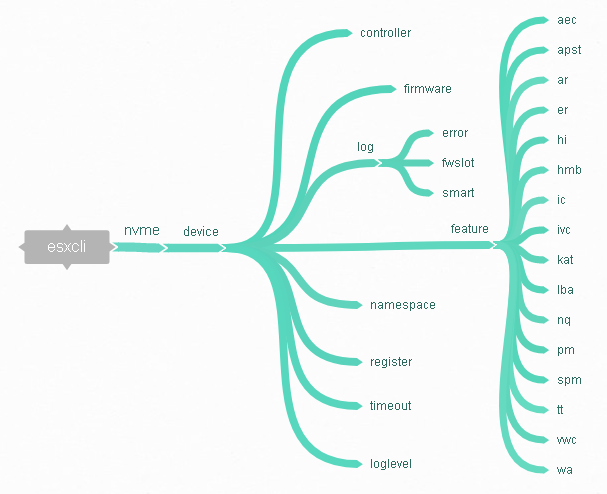
RDMA
Provides information and statistics about Remote Direct Memory Access (RDMA).
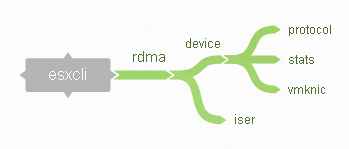
SCHED
This sched namespace manages VMKernel scheduling functions.

SOFTWARE
The software namespace can be used to install updates and additional packages. It also allows you to set the software acceptance level to use vib packages created by the community.
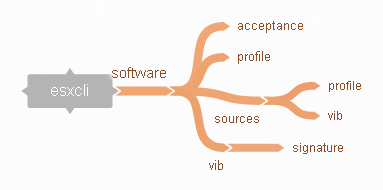
STORAGE
The storage namespace has a lot of use cases. You can configure lun masking, mount nfs shares, manage vmfs filesystems and investigate the path configuration.
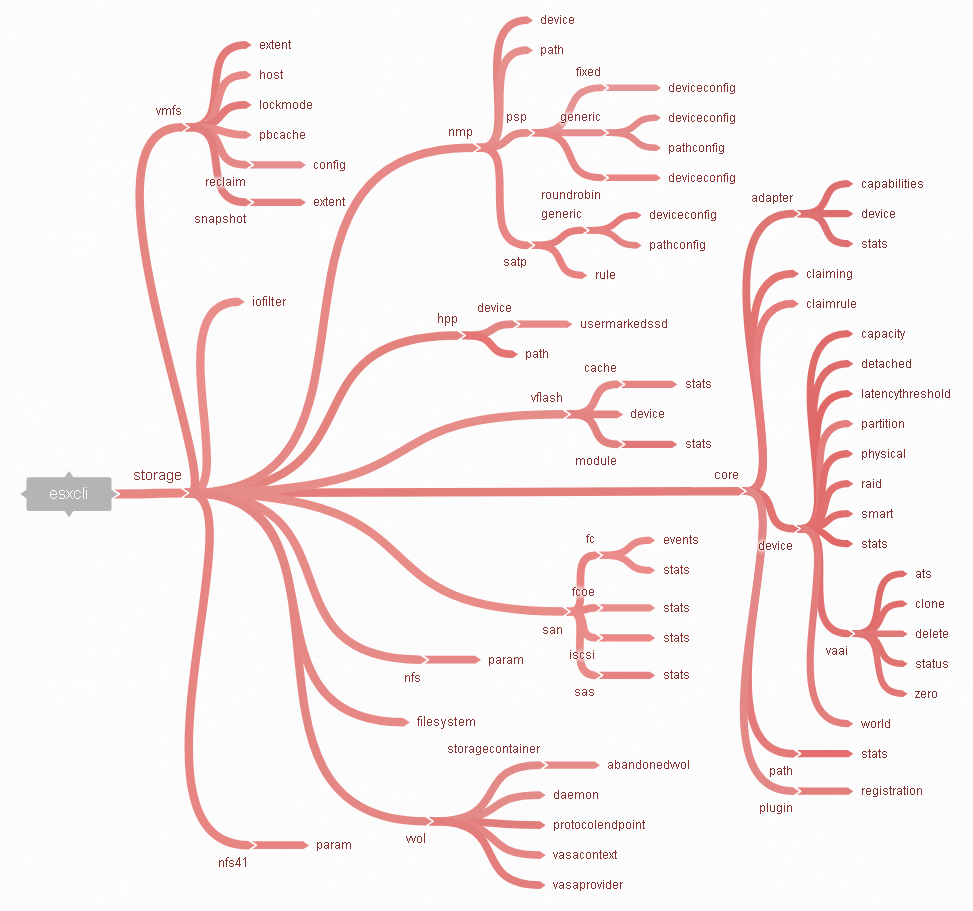
SYSTEM
Any ESXi host related configuration tasks can be performed with the system namespace.
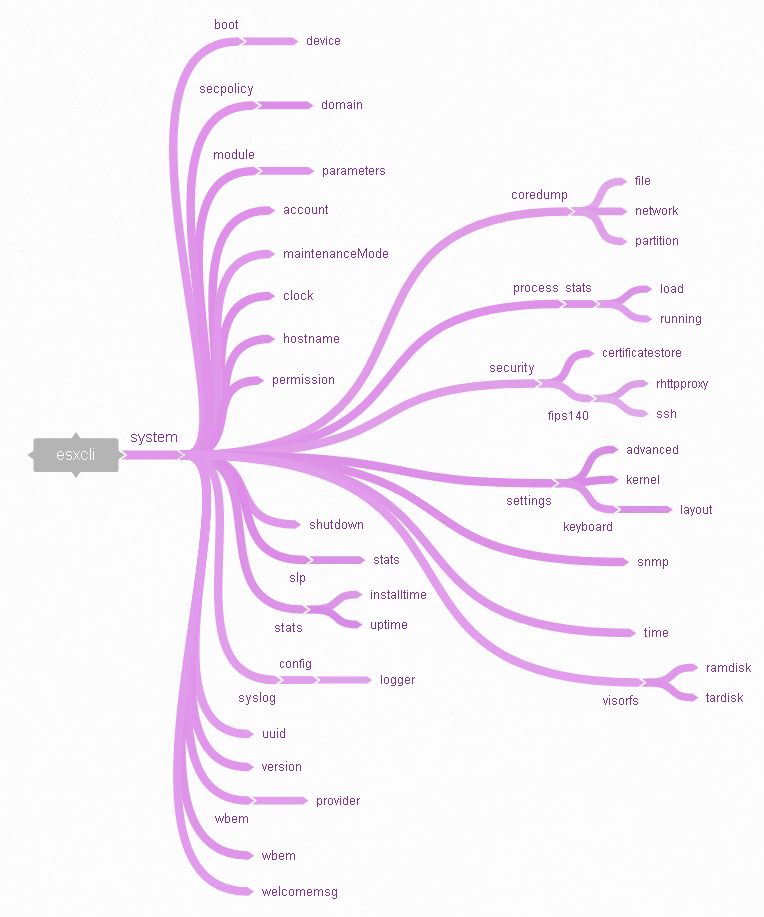
VM
The vm namespace is useful during troubleshooting. It can be used to forcibly kill virtual machines that are stuck and not responding to normal stop operations.

VSAN
The vsan namespace manages the Virtual SAN feature, introduced with vSphere 5.5.
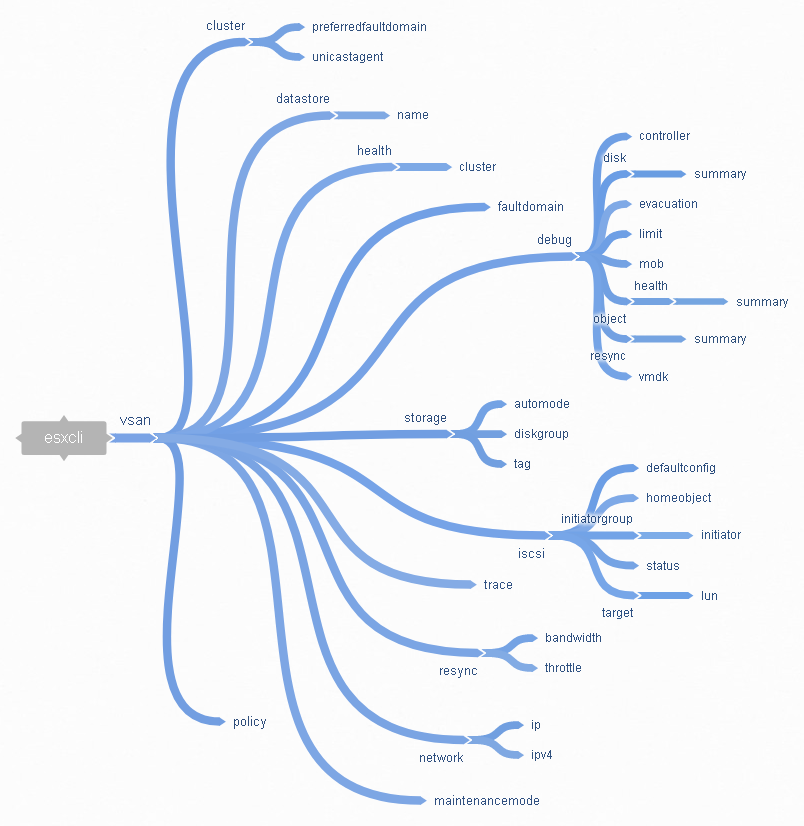
All together
This is a complete mindmap of all esxcli commands. It's quite large, but if you print it to A4 or letter, you can still read it.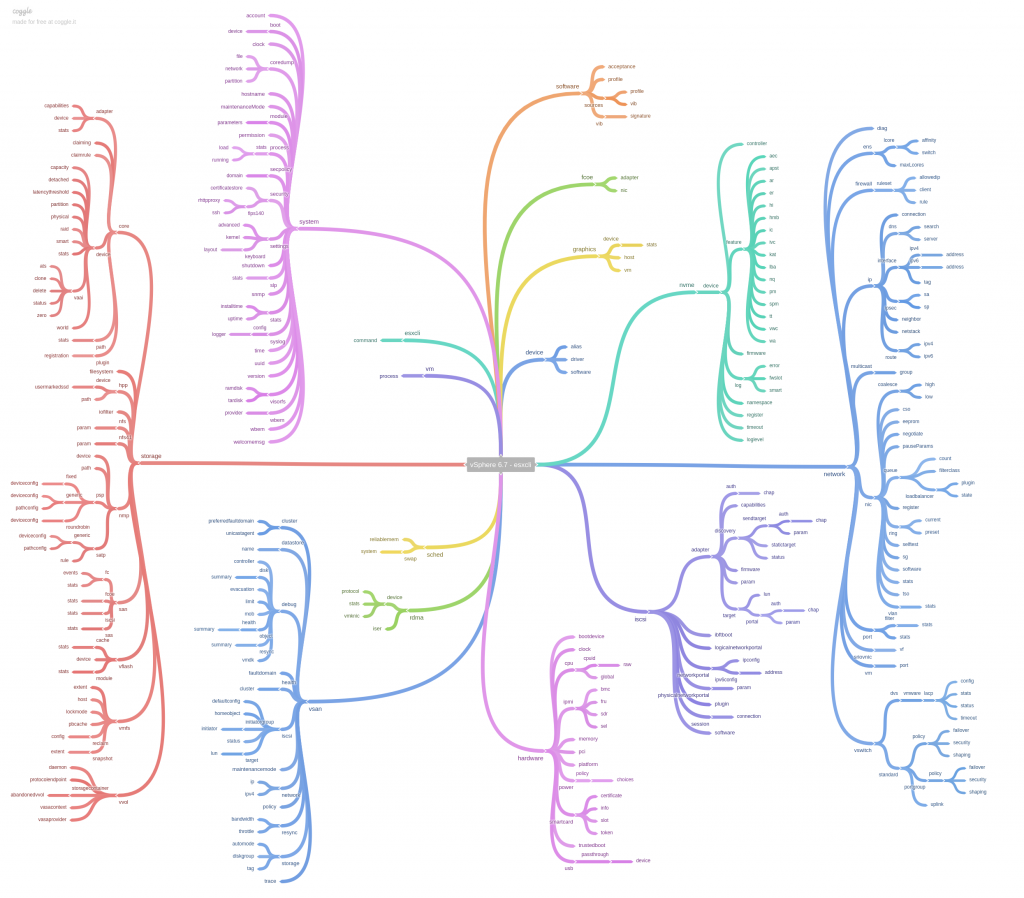 For this mindmap, I've switched to the online mind mapping tool coggle. You can view the full mindmap here.
For this mindmap, I've switched to the online mind mapping tool coggle. You can view the full mindmap here.
Really good to know, thanks much for your contributions.
Amazing post, really I'm excited about it.
Thank you for your sharing. I learned a lot from it.
But the link at the end of your article can't be opened. How can I download your mind map?
Great work.
Muhammad